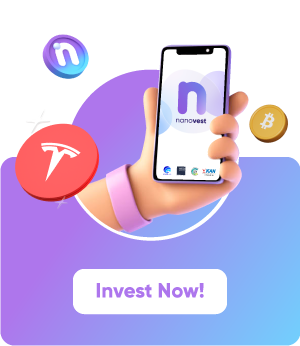
Polkadot (DOT) is a revolutionary blockchain platform designed to connect various blockchains so that they can work together in a larger and stronger ecosystem.
Kalkulator Polkadot ke Rupiah (DOT to IDR)
Konversi Harga Polkadot hari ini ke dalam Rupiah sebaliknya.
Key stats
Market Capitalization
IDR 103.035.249.670.724
Trading volume 24H
IDR 3.106.141.528.626
Volume / Market Cap
3,01463968743947807738 %
Fully Diluted Valuation
IDR 103.035.249.670.724
All time high
IDR 789.913
Circulating supply
DOT 1.522.267.060
Total supply
DOT 1.522.267.060
About Polkadot (DOT)
Polkadot is one of the rising blockchain platforms that offers interoperability solutions between blockchains. Dr. Gavin Wood, one of the founders of Ethereum, is the main architect behind Polkadot.
Dr. Gavin Wood, along with several colleagues, founded the Web3 Foundation in 2017. The Web3 Foundation’s mission is to create a fully decentralized internet, with the development of various open-source protocols and technologies like Polkadot.
Polkadot itself started development in 2016 and was launched in 2020 after successfully raising $145 million through the sale of DOT tokens in 2017.
Polkadot’s Technology and Infrastructure
Polkadot is designed to enable interoperability between different blockchains, allowing users and developers to easily interact with various different blockchains. The main infrastructure of Polkadot consists of the Relay Chain, Parachains, and Parathreads.
The Relay Chain is the heart of Polkadot, responsible for coordinating consensus and transactions between connected parachains. The Relay Chain uses the Nominated Proof-of-Stake (NPoS) consensus mechanism to maintain network security and validate transactions.
Parachains are individual blockchains connected to the Relay Chain. They have the freedom to have their own logic and data structure, according to the needs of the applications they serve. Polkadot provides the opportunity for parachains to communicate with each other through Cross-Chain Message Passing (XCMP), enabling the exchange of data and assets among them.
Parathreads are lighter versions of parachains that allow developers to rent capacity in the Polkadot network as needed. Parathreads use a pay-as-you-go model that is more cost-efficient and flexible.
One of the technologies that facilitates blockchain development in Polkadot is Substrate, a framework developed by Parity Technologies. Substrate provides a set of tools and components that enable developers to build and launch their own blockchains more quickly and easily.
Polkadot’s Consensus Mechanism
Polkadot uses the Nominated Proof-of-Stake (NPoS) consensus mechanism, which combines the concepts of Proof-of-Stake (PoS) and validator nomination by nominators. There are several important roles in the Polkadot ecosystem, namely Validators, Nominators, Collators, and Fishermen.
Validators are responsible for validating transactions and securing the Polkadot network. They run consensus nodes and are responsible for producing new blocks in the Relay Chain. Validators are selected based on the amount of DOT they stake themselves and the nominators who support them.
Nominators are DOT token holders who support validators by delegating their DOT. Nominators choose validators they trust and receive a portion of the rewards earned by those validators. The role of nominators helps prevent power concentration and increase network decentralization.
Collators collect transactions from parachains and assemble them into blocks called collations. Collations are then passed to validators for verification and inclusion in the Relay Chain.
Fishermen act as monitors who oversee malicious behavior in the Polkadot network. If they find evidence of wrongdoing, they can report it to validators and receive a portion of the fines given to the perpetrators.
This NPoS mechanism helps maintain the security and stability of the Polkadot network and prevents attacks such as Sybil and long-range attacks that may occur in Proof-of-Stake consensus systems.
The Use of DOT Tokens
DOT tokens have several important functions within the Polkadot ecosystem, such as participation in consensus, governance, and parachain bonding. Here are some examples of the use of DOT tokens:
- Participation in consensus: Validators and nominators use DOT tokens to participate in the consensus process by staking them. Those who participate well will receive rewards in the form of DOT, while those who act maliciously will lose a portion of the staked DOT.
- Governance: DOT token holders can participate in the on-chain governance system of Polkadot to govern the development and changes within the network. They can propose, vote, and participate in decision-making that affects the future of Polkadot.
- Parachain bonding: Projects that want to connect to Polkadot as parachains must bond a certain amount of DOT in the parachain slot auction process. These DOT tokens will be locked during the duration of the slot and will be returned after the contract period ends.
The inflation and deflation mechanisms of DOT tokens also affect their value. Inflation occurs when new DOT tokens are added to the system as rewards for participants in the consensus. On the other hand, deflation occurs when DOT is removed from circulation, for example through token burning or fines imposed on misbehaving validators.
Governance and Ecosystem Structure of Polkadot
Polkadot uses an on-chain governance system to govern the development and changes within the network. This system allows DOT holders to propose, vote, and participate in decision-making that affects the future of Polkadot. There are several main components in the governance system of Polkadot, such as the Referendum Chamber, Council, and Technical Committee.
The Referendum Chamber is where all DOT holders can vote on proposed referenda. Votes are weighted based on the amount of DOT staked by the voters and the duration of their DOT lock-up.
The Council is a group consisting of members elected by DOT holders to represent the overall interests of the network. The Council has the power to propose and veto referenda put forth by DOT holders.
The Technical Committee is a group consisting of selected technical contributors who provide technical recommendations on proposed referenda. They have the authority to propose emergency referenda that require immediate attention.
Some decisions that have been made through the on-chain governance process in Polkadot include the activation of new features, changes to economic parameters, and allocation of funds for project development.
Projects and Strategic Partners of Polkadot
Various projects and strategic partners have joined the Polkadot ecosystem to leverage its technology and infrastructure. Some examples of projects built on top of Polkadot or using Polkadot technology include Acala, Moonbeam, and ChainX.
Acala is a DeFi platform built on top of Polkadot that offers stablecoins, decentralized exchanges (DEX), and collateralized lending. Acala utilizes Polkadot technology to achieve interoperability with other blockchains.
Moonbeam is a smart contract platform that allows developers to build Ethereum-compatible applications on top of Polkadot. Moonbeam facilitates the migration and integration of Ethereum applications into the Polkadot ecosystem.
ChainX is a blockchain asset bridge that enables users to move digital assets across various blockchains, such as Bitcoin, Ethereum, and Polkadot. ChainX utilizes Polkadot technology to create a secure and decentralized network.
Some strategic partnerships that Polkadot has established with other companies and organizations include Chainlink and KILT Protocol. Chainlink, a leading oracle provider, has integrated with Polkadot to provide reliable off-chain data to applications built on top of Polkadot. Meanwhile, KILT Protocol, a decentralized identity platform, has joined the Polkadot ecosystem to enhance interoperability and adoption of decentralized identity technology.
These collaborations benefit Polkadot and the crypto ecosystem as a whole by helping create more innovative, secure, and decentralized applications and services.
In conclusion, Polkadot (DOT) is a blockchain platform that offers interoperability solutions between various blockchains and has innovative technology and infrastructure. With its Relay Chain, Parachains, Parathreads, and Nominated Proof-of-Stake consensus mechanism, Polkadot creates a secure, flexible, and decentralized ecosystem. DOT tokens have various important functions within this ecosystem, including participation in consensus, governance, and parachain bonding.
Polkadot’s on-chain governance system allows DOT holders to participate in decision-making that affects the future of the platform. Polkadot has also successfully attracted various projects and strategic partners who leverage its technology and infrastructure to create better applications and services.
As an investor and user, exploring Polkadot (DOT) and its various aspects can provide a better understanding of the platform’s potential and how the crypto ecosystem continues to evolve to create more efficient, secure, and inclusive solutions.
Update:
- The highest system development activity was in Polkadot, Kusama, Cardano for 30 days
- Tether (USDT) Launches on the Polkadot Blockchain Network
- Uniswap to expand DeFi reach with upcoming Polkadot deployment
How to Buy Polkadot (DOT)
Interested in purchasing this particular crypto asset? You can buy Polkadot (DOT) by following these steps:
- Install Nanovest app on the App Store or Play Store.
- Register according to the instructions.
- Verify your identity for security and convenience when buying crypto through the KYC feature which you can do in just 1 minute.
- Top Up your balance to your Nanovest account.
- Go to the Crypto menu, search and select Polkadot (DOT).
- Click the Buy button and confirm the purchase with your desired amount. You can start with only IDR 5,000.
Before investing in the crypto asset you want, be sure to conduct research and analysis first. You can do this by checking the crypto asset profile, industry conditions, monitoring price movement trends, and observing its liquidity and trading volume. Performing this analysis is crucial so you can formulate an accurate investment strategy and minimize losses.
Is it Safe to Buy Polkadot (DOT) on Nanovest?
Absolutely. Nanovest is supported by a number of professional partners with a strong reputation for providing quality services. One of these includes the technology backing of the S-Quantum Engine by Sinarmas Financial Services.
For global and US stocks, Nanovest collaborates with brokers registered with the Financial Industry Regulatory Authority (FINRA) in the United States – which ensures Nanovest users’ broker accounts up to US$500k by the Securities Investor Protection Corporation (SIPC) in the United States.
As for crypto assets, Nanovest is an Indonesian crypto exchange registered with the Commodity Futures Trading Regulatory Agency (Bappebti). The Nanovest platform itself is also insured through a partnership with Sinarmas Insurance.
Disclaimer
All content on this website is for informational purposes and doesn’t constitute a recommendation to buy/sell any stock or crypto. Investors should understand the nature of stocks and digital assets, including return and risk requirements of the assets. We encourage investors to fully understand the assets and risks before making any investment. Always do your own research.

